MOISTURE IS KEY
- By Rommel Albuquerque
- December 24, 2020
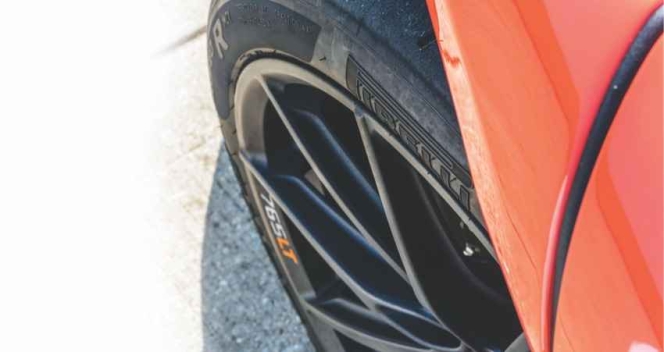
Each time you go to a tyre shop or a gas station to top up the tyre pressure in your vehicle’s tyres, what the attendant fills into the tyre is normal compressed air. But what exactly does compressed air contain? Compressed air is made up of 78% nitrogen, about 20-21% oxygen, and the balance one percent consists of CO2, and tiny concentrations of gases such as neon, argon and water vapour.
When you specifically fill nitrogen gas into the vehicle's tyres, then you should have 100% dry nitrogen in your tyre. Dry nitrogen denotes that no moisture content or any other gases are present in the tyre.
 Jay Chakraborty, who recently bought a second hand car, says, “After I bought my car, I changed the tyres and I’ve heard so many people talk about how good nitrogen has been for them that I decided to get my new tyres filled with nitrogen air. The car feels a lot better on bumpy roads, and I don’t have to worry about checking tyre pressure every week.”
Jay Chakraborty, who recently bought a second hand car, says, “After I bought my car, I changed the tyres and I’ve heard so many people talk about how good nitrogen has been for them that I decided to get my new tyres filled with nitrogen air. The car feels a lot better on bumpy roads, and I don’t have to worry about checking tyre pressure every week.”
Benefits of nitrogen Vs compressed air
Nitrogen as a gas is made up of big molecules, whereas oxygen molecules are much smaller in size compared to nitrogen molecules. When compressed air is put into a vehicle’s tyres, the moisture in the tyre seeps through the rubber over time and evaporates quicker as its molecules are smaller in size. But as nitrogen molecules are bigger in size, they do not permeate the tyres rubber so easily and hence will stay in the tyre for a longer duration. This means that your vehicle’s tyres will lose less pressure over time compared to regular compressed air filled tyres.
For example: An inactive vehicle, whose tyres are filled with normal compressed air will lose tyre pressure every week. But a 100% nitrogen-filled tyre will lose tyre pressure a lot slower and won’t need to be topped up as frequently.
 Titus Remedios, “I filled nitrogen in the new tyres that I purchased for my Maruti Ecco in June 2019. That time the tyre pressure filled with nitrogen was 35Psi. I use the car once a week and after the lockdown, the car hadn’t been used in months. I recently went back in October 2020 to the place where I had filled the nitrogen in the car tyres and the tyre pressure after 14 months had only dropped to 22Psi. .
Titus Remedios, “I filled nitrogen in the new tyres that I purchased for my Maruti Ecco in June 2019. That time the tyre pressure filled with nitrogen was 35Psi. I use the car once a week and after the lockdown, the car hadn’t been used in months. I recently went back in October 2020 to the place where I had filled the nitrogen in the car tyres and the tyre pressure after 14 months had only dropped to 22Psi. .
Another point to note, nitrogen filled tyres get a green or blue colour valve cap. This is a universal symbol that your vehicle's tyres are filled with nitrogen and not compressed air.
Is Nitrogen right for you?
Over-inflation and under inflation of tyres make a major difference on the race track. But on your normal city road does it make a huge difference? Under-inflated tyres normally lead to less mileage, uneven wear on the tyre treads and more tyre wear and tear overall. Over inflated tyres run the risk of burning out the contact patch on the tyre too quickly, while adding more bounce vs grip to a vehicle's stability. In hot climate conditions, your vehicle's tyre pressure can jump up tremendously. Highway running speeds coupled with a harsh sun beating down, can lead to a tear in the tyre or in extreme conditions, a tyre bursting. This is where nitrogen-filled tyres shine the most. Due to their molecular build, nitrogen molecules stay at a constant temperature in a tyre. So even if the temperature outside decreases or increases, the nirotgen in the tyre will remain the same. That is why race cars and racing motorcycles only use 100% nitrogen in their tyres all the time.
Now we are all not professional racers, but we do commute on a daily basis and even go for the occasional weekend drive out of the city for some sightseeing and relaxation. Will filling nitrogen in your vehicle's tyre help you? There are many who swear by nitrogen-filled tyres and an equal amount who feel that regular compressed air works just fine.
Personal tyre maintenance
If you are someone who keeps a check on the vehicles tyre pressure weekly and tops up the air when needed, you won’t need nitrogen filled into your vehicles tyre. However, if you are someone who tops air pressure once a month or once in two months, then filling nitrogen in your vehicle's tyres will help you reap the benefits of it. If you constantly make long highway trips and most of your time is spent behind the wheel, then filling nitrogen in your vehicle's tyres will be a boon.
 Yash Ramrakhyani from Palghar runs a big tyre shop which sells Apollo, Bridgestone, Continental, Michelin and Yokohama tyres for every vehicle from a scooter to a heavy duty tempo. He says, “I get an average of 300 customers a year who want nitrogen filled in their vehicle’s tyres. There was a big local demand in the area for nitrogen-filled tyres, hence my father and me invested in the nitrogen unit. Tyres don't get hot, and nitrogen level doesn't go down so fast is what I have heard from customers as feedback, but the fact that people think nitrogen levels in the tyre doesn't go down is false. Even nitrogen-filled tyres have to be checked for tyre pressure once a month.
Yash Ramrakhyani from Palghar runs a big tyre shop which sells Apollo, Bridgestone, Continental, Michelin and Yokohama tyres for every vehicle from a scooter to a heavy duty tempo. He says, “I get an average of 300 customers a year who want nitrogen filled in their vehicle’s tyres. There was a big local demand in the area for nitrogen-filled tyres, hence my father and me invested in the nitrogen unit. Tyres don't get hot, and nitrogen level doesn't go down so fast is what I have heard from customers as feedback, but the fact that people think nitrogen levels in the tyre doesn't go down is false. Even nitrogen-filled tyres have to be checked for tyre pressure once a month.
Nitrogen myths busted
Myth 1: Your vehicle's mileage will increase.
Truth: Your vehicle’s mileage depends on a lot of factors, tyres being just one small part of that equation. Having nitrogen filled tyres only gives you the benefit of having a most constant tyre pressure. However compressed air and nitrogen filled tyres both will loose pressure after a certain amount of time.
Myth 2: Your vehicle's comfort will be better, it will be soft on bumps.
Truth: Compressed air or nitrogen filled tyres will react the same way when on bumpy roads. It is the rubber compound and the type of tyres that you have that will make a difference in the ride or drive quality. As long as you maintain the right air pressure in your vehicle's tyres, you’ll be good.

Myth 3: You won’t have to fill up the tyre pressure as frequently.
Truth: Well this is true. Nitrogen-filled tyres will retain the pressure in your vehicle's tyre for a longer time duration compared to tyres filled with compressed air. However, even nitrogen-filled tyres loose pressure over time and you have to get the pressure checked and topped up from time to time.
Myth 4: Your vehicle's tyre will last longer
Truth: The tyre on your vehicle rely on you to make sure you maintain the recommended air pressure inorder for it to do its job properly. Under inflated and over inflated tyres will wear out faster when compared to tyres that have been properly maintained.
Myth 5: The rims on your vehicle won't rust
Truth: There is some amount of truth in this. As nitrogen-filled tyres contain less or no water vapour, the moisture content in the tyre is less. Less moisture equals to less rust on the inside of the wheel. But that doesn’t stop the rest of the wheel from rusting due to everyday washing and climate conditions.
Myth 6: There are few tyre shops / fuel pumps that offer nitrogen.
Truth: Compressed air is mostly nitrogen gas. So even if you have nitrogen-filled tyres, but you’re running low on tyre pressure and there’s no nitrogen filling station around, you can still fill normal compressed air. It will not have any major impact on your vehicle's tyres. Maintaining the right tyre pressure is key.

 The catch
The catch
The nitrogen that you get filled in your vehicle's tyres is not a 100% or even 99% pure nitrogen. A brand new or even an old tyre once deflated has some amount of air inside it. It is the atmospheric air that's already there all around us. So unless you drain all the air in the tyre out and refill it nitrogen and drain the tyre again 2-3 times, you’ll still be running your vehicle's tyres with 90% nitrogen and not 100% nitrogen. But even then you’re not guaranteed that your vehicle's tyres will be filled with 100% pure nitrogen. There is no way to measure how much nitrogen is there in your vehicle’s tyre. Nitrogen will cost you, whereas compressed air is free at most petrol pumps or Rs.1-2 at a tyre shop. Nitrogen costs on the other hand vary from place to place and the kind of machine they have. The machines that are at the tyre shops or petrol pumps that offer nitrogen, do not deliver pure 100% nitrogen! Some machines will have a percentage rating of how much nitrogen it provides to the tyre and some have no percentage levels at all. Filling nitrogen in your vehicle's tyres can cost you anywhere from Rs.150 for four tyres to Rs.50 per tyre and can go all the way up to Rs.1,500 for a set of four tyres.
Conclusion
Have you ever noticed that vehicle manufactureres never recommend nitrogen in their manuals or at their service centers. The reason behind this is your vehicle's tyres are manufactured to run on normal compressed air. As long as you maintain the right tyre pressure in your vehicle’s tyre, you’ll be fine.
Vaculug Acquires Scotland's Tyrefair To Drive Northern Expansion
- By TT News
- September 11, 2025
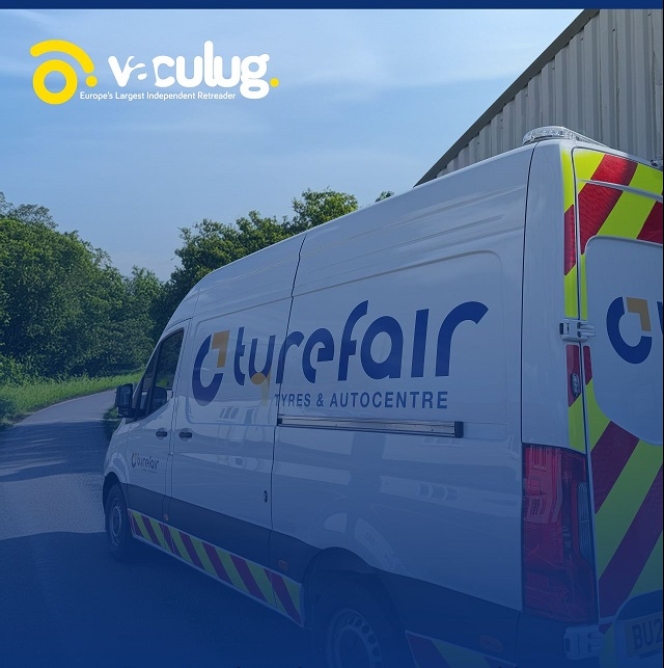
Vaculug, Europe’s largest independent retreader producing high-quality OTR and truck retread tyres for fleets across the UK and Europe, has expanded its UK presence by acquiring Tyrefair in Kinross, Scotland.
This strategic acquisition extends the company's award-winning service further north, ensuring Scottish customers receive the same high-quality OTR and truck retread tyres Vaculug has supplied for 75 years. Since the purchase, the Kinross location has already grown by 25 percent, with an ambitious target to double its business within a year and then double it again.
This move is a key part of Vaculug's 2026 growth strategy, focused on strategic acquisitions that enable better, faster and more sustainable customer service. The acquisition reinforces Vaculug’s long-standing environmental mission, marking a new chapter of sustainable growth with a strengthened Scottish operation.
- Nokian Tyres
- American Tyre Distributors
- All-Season Tyres
- All-Weather Tyres
- All-Terrain Tyres
- Winter Tyres
Nokian Tyres Partners With American Tire Distributors
- By TT News
- September 11, 2025
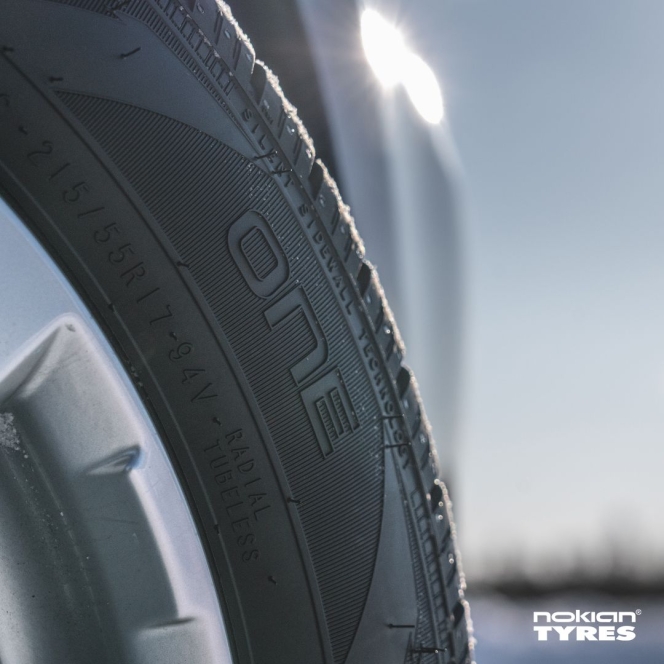
Nokian Tyres is expanding its US presence through a new nationwide partnership with American Tire Distributors (ATD). This agreement provides Nokian access to ATD’s vast network of over 110 distribution centres, serving roughly 80,000 customers.
The collaboration will efficiently supply tyre shops with Nokian’s complete product lineup, enabling dealers to broaden their inventory. Both companies bring 90 years of experience and a shared dedication to innovation, safety and sustainability. This partnership will offer drivers more choices, supported by Nokian’s award-winning Tennessee factory and ATD’s technology-driven logistics.
This enhanced distribution capability ensures that consumers will have greater access to a full spectrum of high-performance tyres, meeting diverse driving needs and conditions. The alliance strengthens both brands' market positions by combining premium products with an unparalleled delivery system, ultimately improving service for dealers and drivers alike across the country.
Chris Ostrander, SVP, North America, Nokian Tyres, said, “The partnership with ATD enables us to reach more tyre shops and more drivers than ever before. ATD’s robust distribution network, customer service and responsiveness strengthen our agility to serve both new and existing customers.”
- USTMA
- U.S. Tire Manufacturers Association
- Tire Recycling Foundation
- Tyre Circularity
- End-Of-Life Tyres
- Tyre Industry Webinars
USTMA Announces Webinar Series To Advance Circular Economy For ELTs
- By TT News
- September 11, 2025
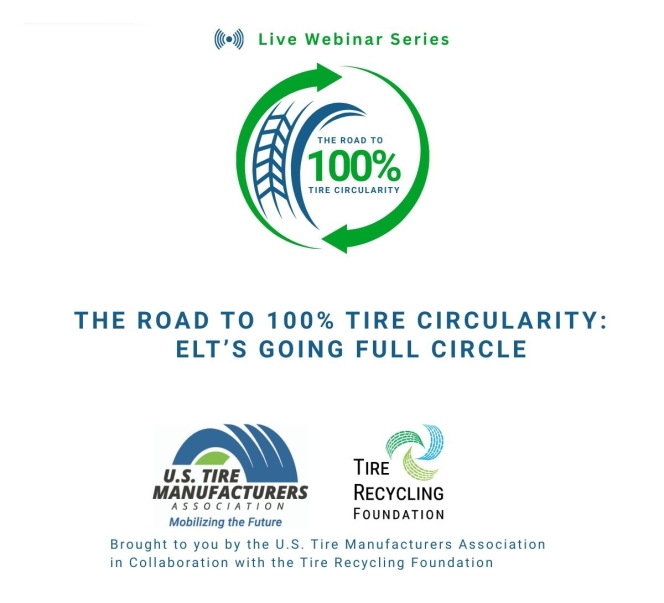
The U.S. Tire Manufacturers Association (USTMA) has announced a new webinar series designed to advance the circular economy for end-of-life tyres (ELTs) in collaboration with the Tire Recycling Foundation. Titled ‘The Road to 100% Tire Circularity: ELTs Going Full Circle’, the initiative aims to foster the development of scalable and profitable markets for recycled tyres. The series will launch in September 2025 and continue through February 2026.
Hosted by John Sheerin, USTMA’s Senior Director of ELT Programs, each session will convene industry experts, recyclers and state policymakers. Their discussions will focus on the latest research and real-world applications that transform waste tyres into valuable resources, thereby diverting them from landfills and generating environmental, industrial and economic benefits.
The programme will explore three of the most promising markets for end-of-life tyres. It begins on 23 September 2025 with a session on tyre-derived aggregate (TDA), examining its use in civil engineering projects like structural fill and stormwater management. A subsequent webinar on 30 October 2025 will cover the growing market for moulded and extruded products made from recycled rubber.
A significant portion of the series will be dedicated to rubber-modified asphalt (RMA), a material known for creating longer-lasting and more sustainable roadways. An introductory session on 20 November 2025 will review the overall performance and benefits of RMA. This will be followed by two regional deep dives: one on 14 January 2026, focusing on practical applications in Midwestern states like Michigan and Ohio, and another on 28 January 2026, exploring its adoption in Southern states including Kentucky and Georgia. The series will culminate on 24 February 2026 with a capstone session providing a comprehensive overview of grant and funding opportunities available to support the growth of these ELT markets.
This initiative addresses a critical need. While tyres are one of the most recycled products in US, and stockpiles have been reduced by 94 percent over the past three decades, the generation of end-of-life tyres continues to outpace their consumption in recycling markets. The webinar series is presented as a strategic pathway to bridge this gap by promoting innovative and sustainable end-use applications.
Those interested in shaping the future of tyre management are encouraged to register for any or all of the webinars through the USTMA website. Attendees will receive a resource kit after each session to help facilitate further discussion and action.
Anne Forristall Luke, President & CEO, USTMA, said, “We view these webinars as a crucial opportunity to connect key leaders across the country and show them that sustainability and economic growth go hand-in-hand. By showcasing proven applications and providing the tools to act, we can collectively turn ELTs from a waste challenge into an economic engine.”
Sheerin said, “As we look to expand ELT markets and unlock the full environmental and economic potential of end-of-life tyres, collaboration is essential. And no one can do it alone. State DOTs, regulators, recyclers and manufacturers must work together to help grow ELT markets through targeted investment, supportive policy and continued research.”
Continental Advances Sustainable Tyre Production With Used Cooking Oil
- By TT News
- September 10, 2025
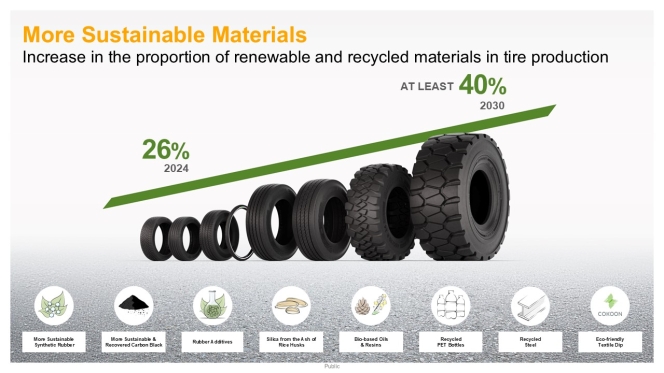
Continental is accelerating its commitment to sustainability by integrating a growing proportion of renewable and recycled materials into its tyre manufacturing. The company’s current average of 26 percent is projected to rise by several percentage points within the year, with a strategic goal of reaching at least 40 percent by 2030. A central pillar of this initiative involves rethinking the sourcing of two essential components: rubber and resins.
Rubber is a fundamental material, constituting up to 40 percent of a modern high-performance tyre’s weight. Continental utilises a complex blend of up to 100 different raw materials, engineered into numerous customised rubber compounds for each tyre. The portfolio includes both natural rubber, prized for its durability and resistance in critical areas like truck treads, and synthetic rubber, which enhances braking performance and rolling resistance in passenger vehicles. The company is now progressively replacing conventional fossil-based synthetic rubber with more sustainable alternatives. This includes synthetic rubber derived from used cooking oil and pyrolysis oil from end-of-life tyres, sourced from certified partners like Synthos and TotalEnergies Cray Valley.
Complementing rubber, specialised resins are vital for optimising a tyre’s performance characteristics. These resins help fine-tune the balance between elasticity and resilience, which directly improves wet grip, abrasion resistance and energy efficiency. Continental is incorporating circular resins, also certified under the ISCC PLUS standard, which originate from renewable feedstocks like vegetable oil or used cooking oil.
Furthermore, the company is adopting sustainable alternatives for key additives. For instance, it is the first tyre manufacturer to use a certified biocircular version of the antioxidant TMQ. Produced from waste materials such as recycled cooking oil, this additive achieves a carbon footprint over 30 percent lower than its conventional counterpart.
To systematically track and scale the use of these sustainable materials, Continental employs a mass balance approach. This method allows fossil-based, renewable and recycled feedstocks to be mixed in production while accurately attributing the sustainable content to the final product. This system provides verifiable documentation and enables Continental to continuously increase its use of certified materials across its entire tyre range.
Jorge Almeida, Head of Sustainability at Continental Tires, said, “We’re closing the loop: Continental is ramping up its commitment to a circular economy and mapping out its path for the future. Innovative solutions enable us to use more sustainable raw materials, such as synthetic rubber made from used cooking oil or resins based on certified renewable feedstocks originally derived from vegetable oil.”
Matthias Haufe, Head of Material Development and Industrialisation at Continental Tires, said, “The mass balance approach enables us to efficiently manage the complexity of the raw materials portfolio and track how these raw materials are used at multiple production sites in a wide range of markets. In this way, we can steadily increase the share of renewable and recycled materials in our tyre production – and transparently document the progress we make.”


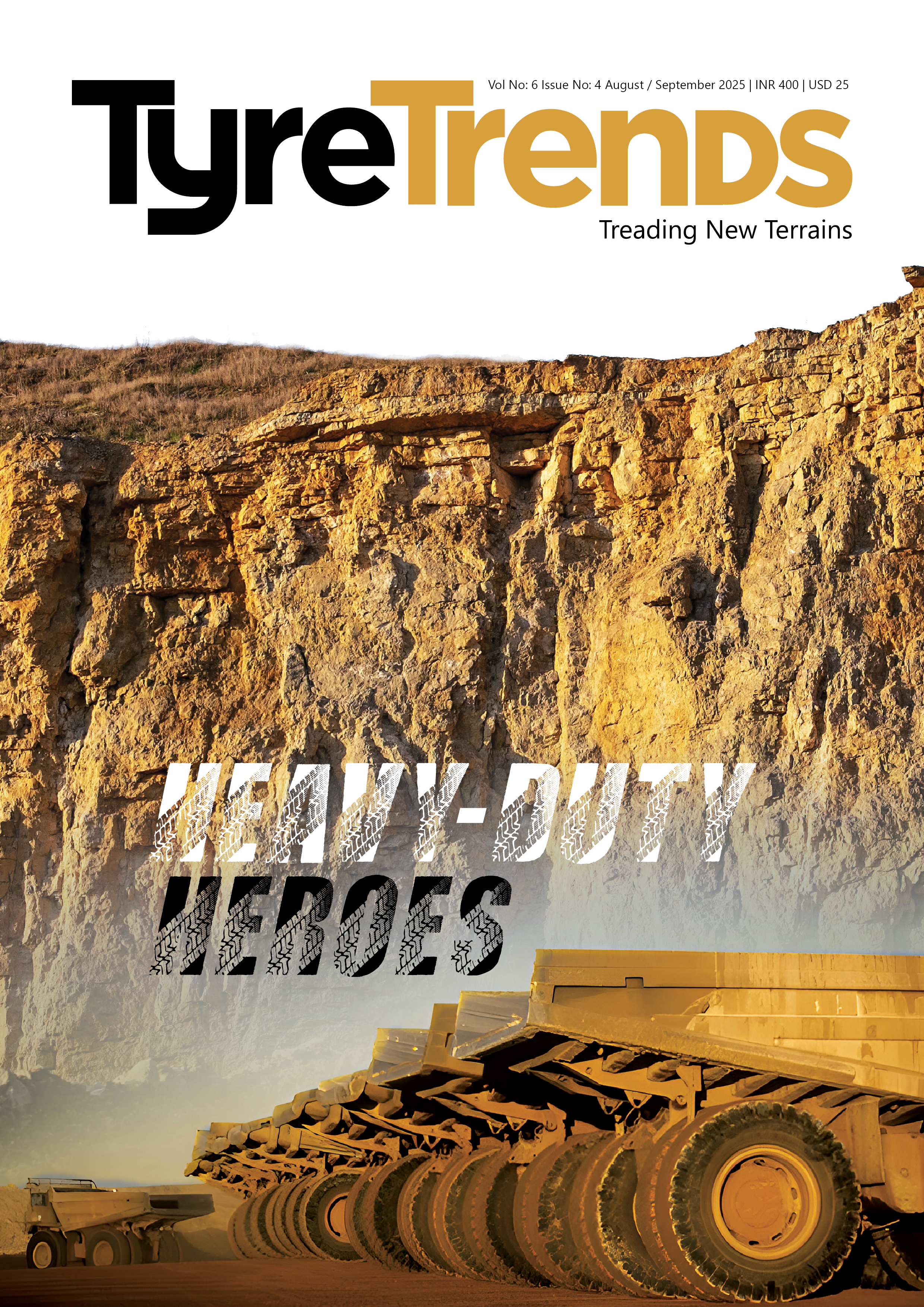
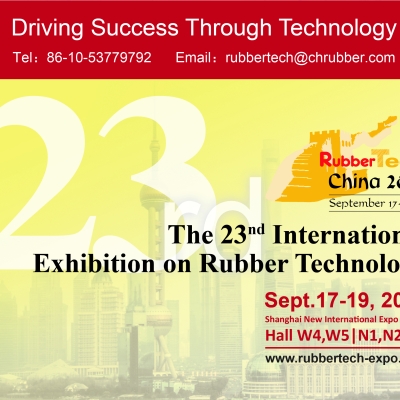
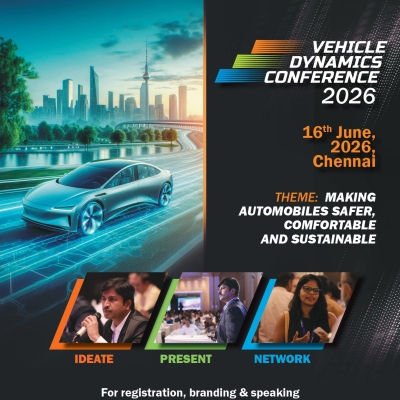

Comments (0)
ADD COMMENT